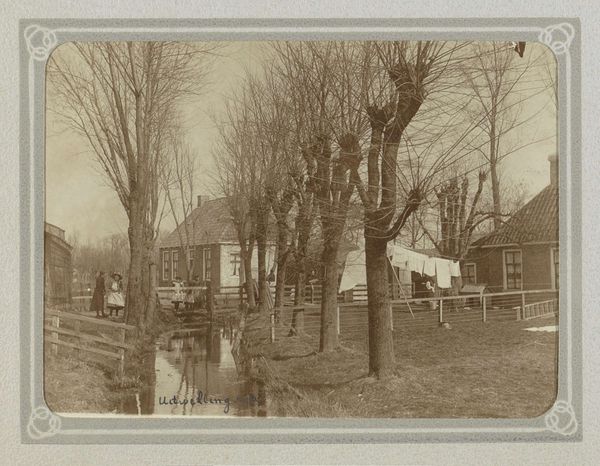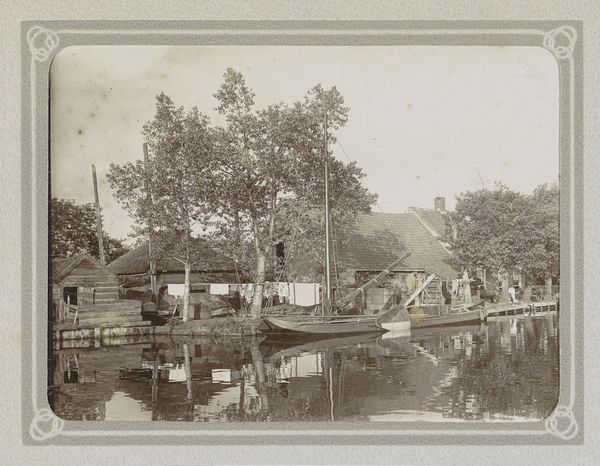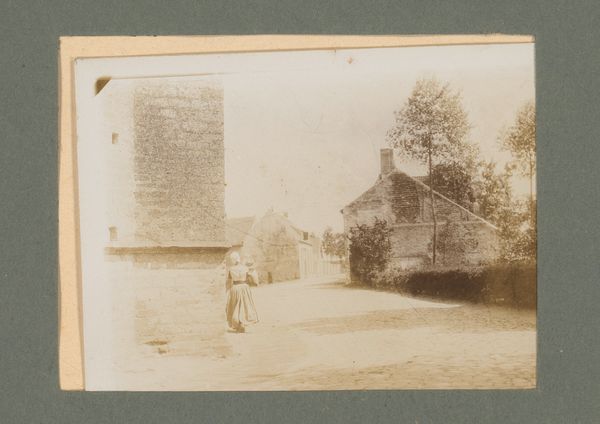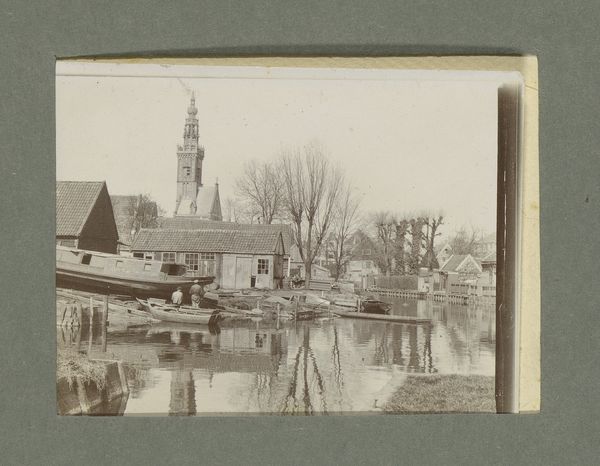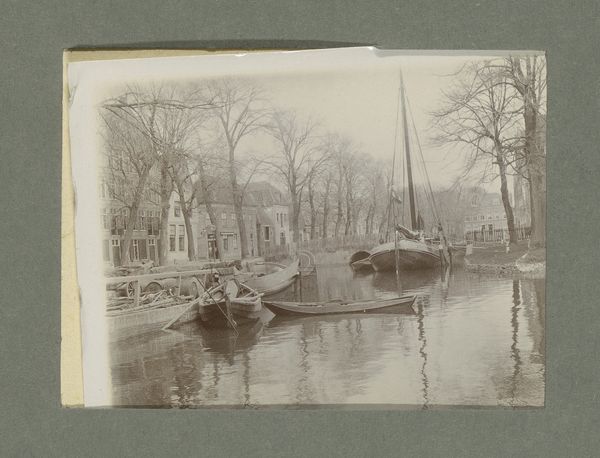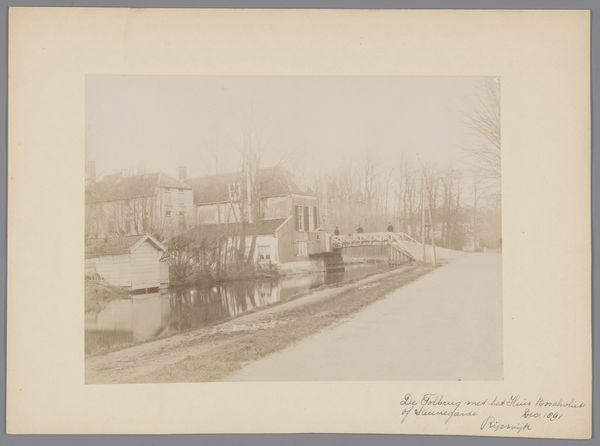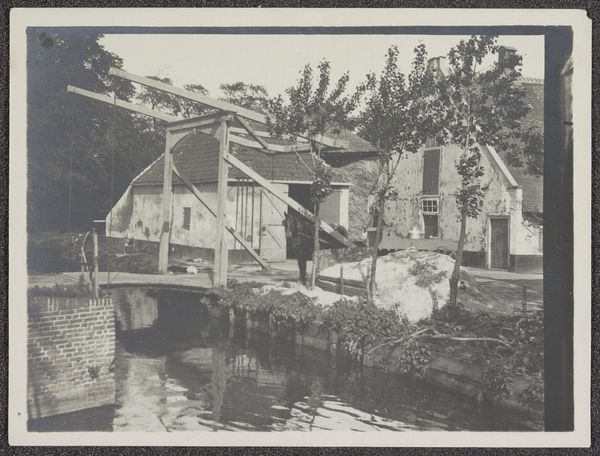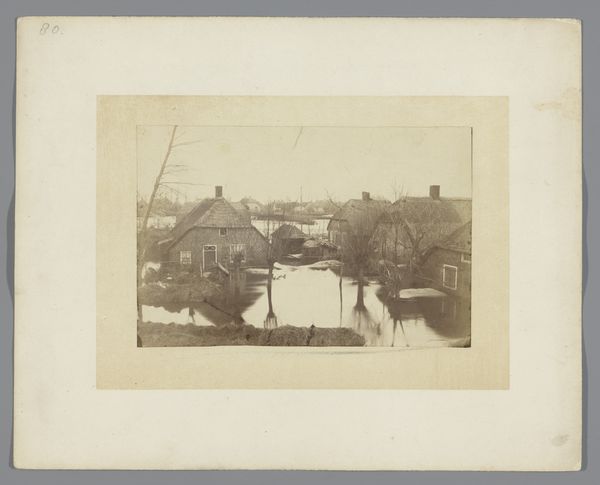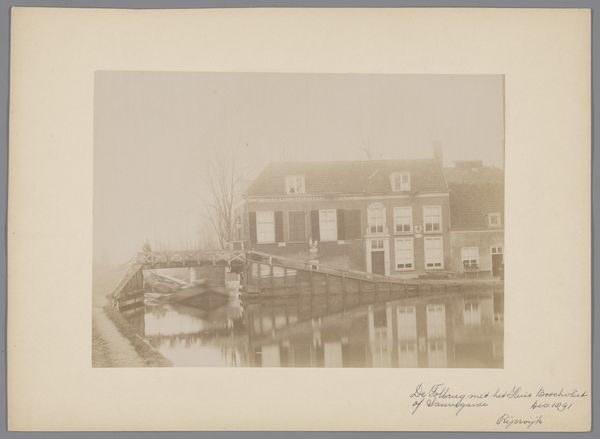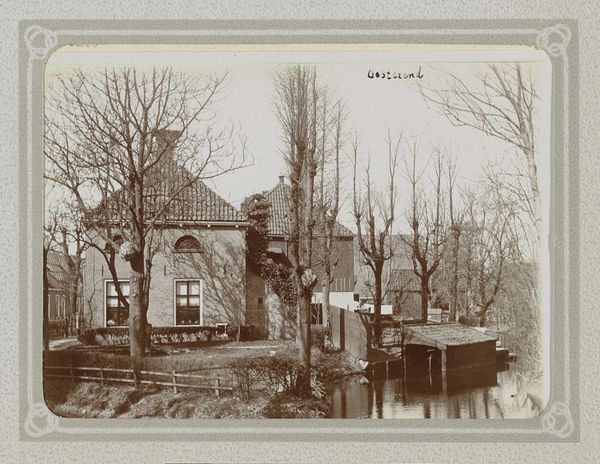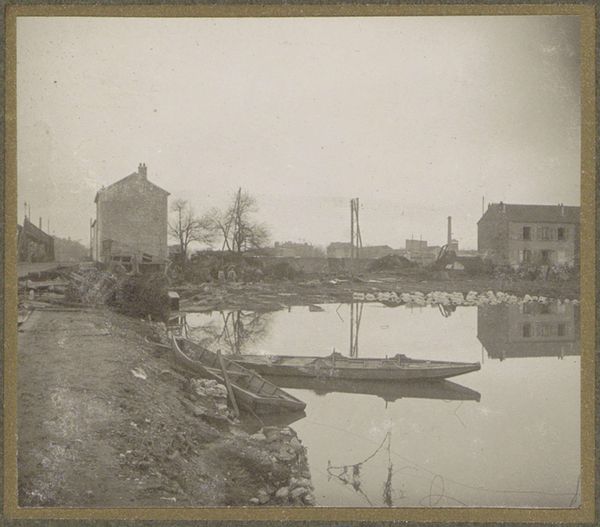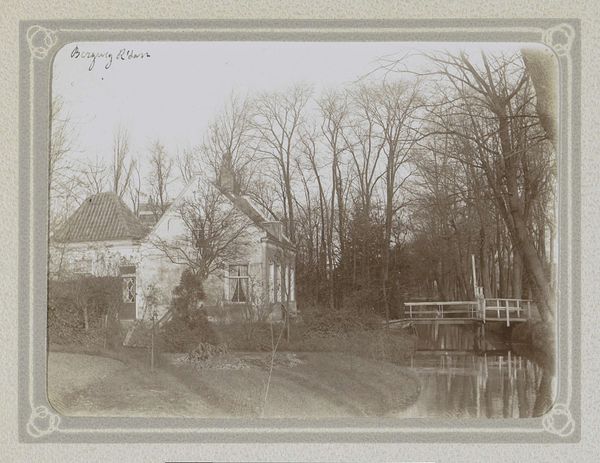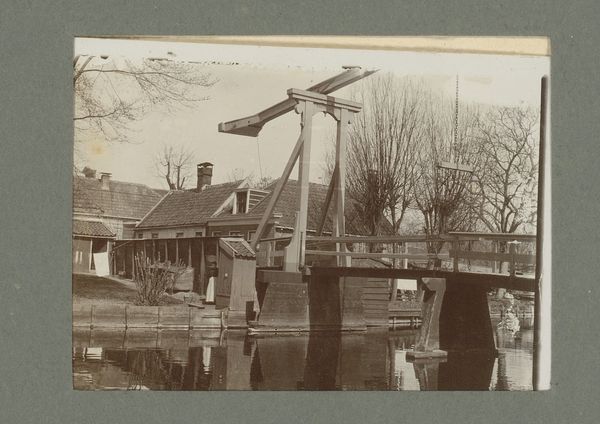
photography, gelatin-silver-print
#
dutch-golden-age
#
landscape
#
photography
#
gelatin-silver-print
#
cityscape
#
realism
Dimensions: height 74 mm, width 99 mm
Copyright: Rijks Museum: Open Domain
Curator: I’m struck by how melancholic this photograph feels. There's a softness to it that mutes the reality of what is, after all, just a cityscape. Editor: That's interesting. This gelatin silver print, tentatively dated to sometime between 1920 and 1940, is by an artist known as G. Hidderley. The title translates to "View of a boat in a landscape with a ditch," which is incredibly descriptive. It certainly presents a very matter-of-fact realism that many artists adopted during that era. Curator: Realism, maybe. But filtered through a certain sensibility. Look at how the light catches the water, the quiet stillness of the buildings, how small the figure in the boat seems. It evokes a sense of nostalgia, doesn't it? A longing for a simpler, rural life perhaps overshadowed by the burgeoning modernity of the interwar years? Editor: That interpretation resonates given the period. There's a tension in many artworks from this era—between progress and tradition, between urbanization and the romanticized countryside. The very act of documenting this scene—this "landscape with a ditch"—can be viewed as a way of preserving something perceived to be disappearing. And considering the traditional appearance of that wooden tower, I'd argue that this is, after all, a vanishing landscape. Curator: Yes! And the photograph itself becomes a historical artifact, a way to hold onto that disappearing world. There’s something so powerful about the way photography can freeze a specific moment in time. Like a memory half-remembered. I'm certain that in Hidderley’s time people saw themselves documenting what their parents or grandparents would still consider an antique lifestyle. Editor: The choice of black and white undoubtedly contributes to this mood as well. It lends the photograph a timeless quality. Think about it; the lack of color invites us to project our own interpretations onto the scene, to see in it what we want to see. What do you make of the architecture? Curator: Very angular; it emphasizes a no-nonsense approach. Also, those sharp, precise reflections in the water—they're not soft at all. They add a counterpoint to the dreamlike state of the general image, and ground you again in a solid perspective, like the cold and functional base reality that keeps the beautiful image tied down. Editor: I agree, and I’m glad that through our perspectives we can provide diverse interpretations about this small work that otherwise may pass for documentary photography. It highlights that, although unassuming, these photographs deserve analysis through historical and poetic means. Curator: Indeed, and for that same reason, there is merit to presenting a common scene in such a unique way, using light, reflections, and composition to elevate it into an artform.
Comments
No comments
Be the first to comment and join the conversation on the ultimate creative platform.
